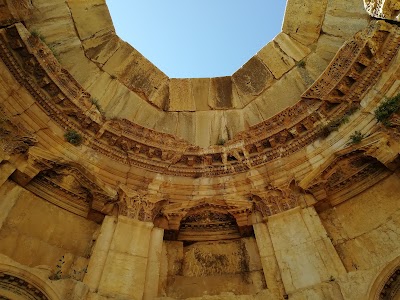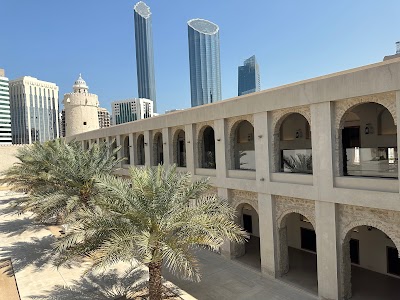Temple of Venus (معبد فينوس)
Related Places
Overview
Located in the stunning Baalbek-Hermel region of Lebanon, the **Temple of Venus** stands as a remarkable testament to ancient Roman architectural brilliance and their reverence for the goddess of love and beauty. This enchanting temple is part of the broader Roman sanctuary complex in Baalbek, constructed in the 2nd century AD, during the peak of the Roman Empire. Known historically as Heliopolis, or the "City of the Sun," Baalbek was a vital cultural and religious center during Roman rule, making the Temple of Venus a significant landmark in this rich tapestry of history.
One of the most striking features of the **Temple of Venus** is its unusual circular shape, setting it apart from the more typical rectangular layouts of Roman temples. Measuring approximately 10 meters in diameter, it may be smaller than the grand temples dedicated to Jupiter and Bacchus in Baalbek, yet its unique architectural design and elegance render it a masterpiece. The temple's complex geometric form is a visual delight, inviting admiration from all who visit.
Constructed from locally sourced limestone and granite, the temple boasts intricate carvings that showcase the craftsmanship of Roman builders. The circular colonnades, adorned with Corinthian capitals, not only provide structural support but also lend an air of grandeur to the temple's appearance. Inside, niches in the walls once held statues, likely depicting Venus and other deities associated with love and beauty, creating an ethereal ambiance that still echoes in the ruins.
The **engineering prowess** of the Romans is evident in the construction of the Temple of Venus. The circular layout, combined with radiating alcoves, optimizes weight distribution and adds to the aesthetic harmony of the structure. Precision cutting and placement of stones ensured its stability through the ages, while mortar and iron clamps securely bonded the stones, exemplifying Roman innovation in building technology.
Despite enduring seismic activity and periods of neglect over the centuries, the temple's core structure remains remarkably intact. During the Byzantine era, the temple was repurposed as a church, leading to some modifications in its original design. Nevertheless, the distinctive features of the temple's architecture have been preserved, continuing to captivate visitors with their beauty and historical significance.
In contemporary times, the site of Baalbek, with its impressive collection of Roman temples, including the Temple of Venus, has been designated a **UNESCO World Heritage site**. Ongoing preservation and restoration efforts aim to safeguard these historical treasures, ensuring that their cultural significance endures for future generations to explore and appreciate.
The **Temple of Venus** in Baalbek-Hermel exemplifies Roman architectural mastery and their ability to harmonize local materials with their cultural influences. Nestled amidst the ruins of a once-great city, the temple stands as an invitation for visitors to reflect on the rich heritage of ancient civilizations and the timeless allure of their remarkable achievements.









